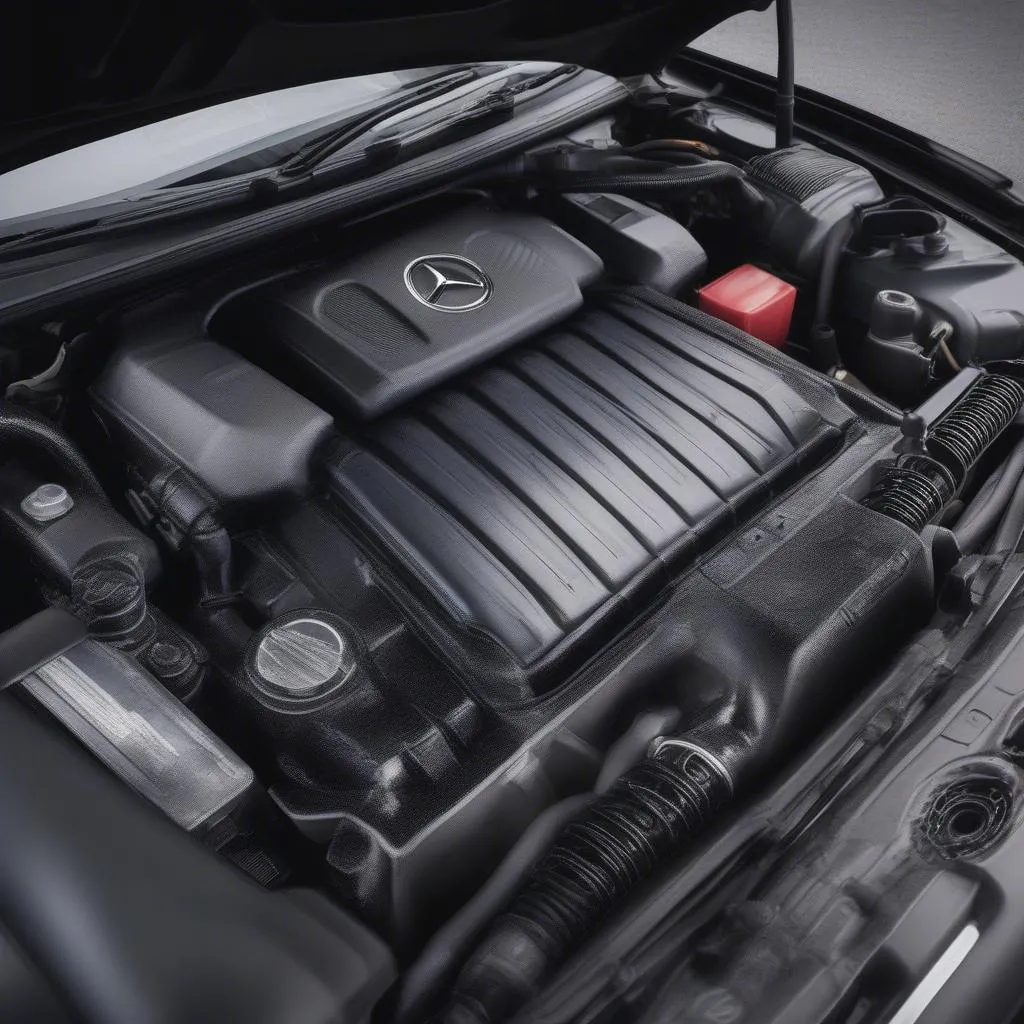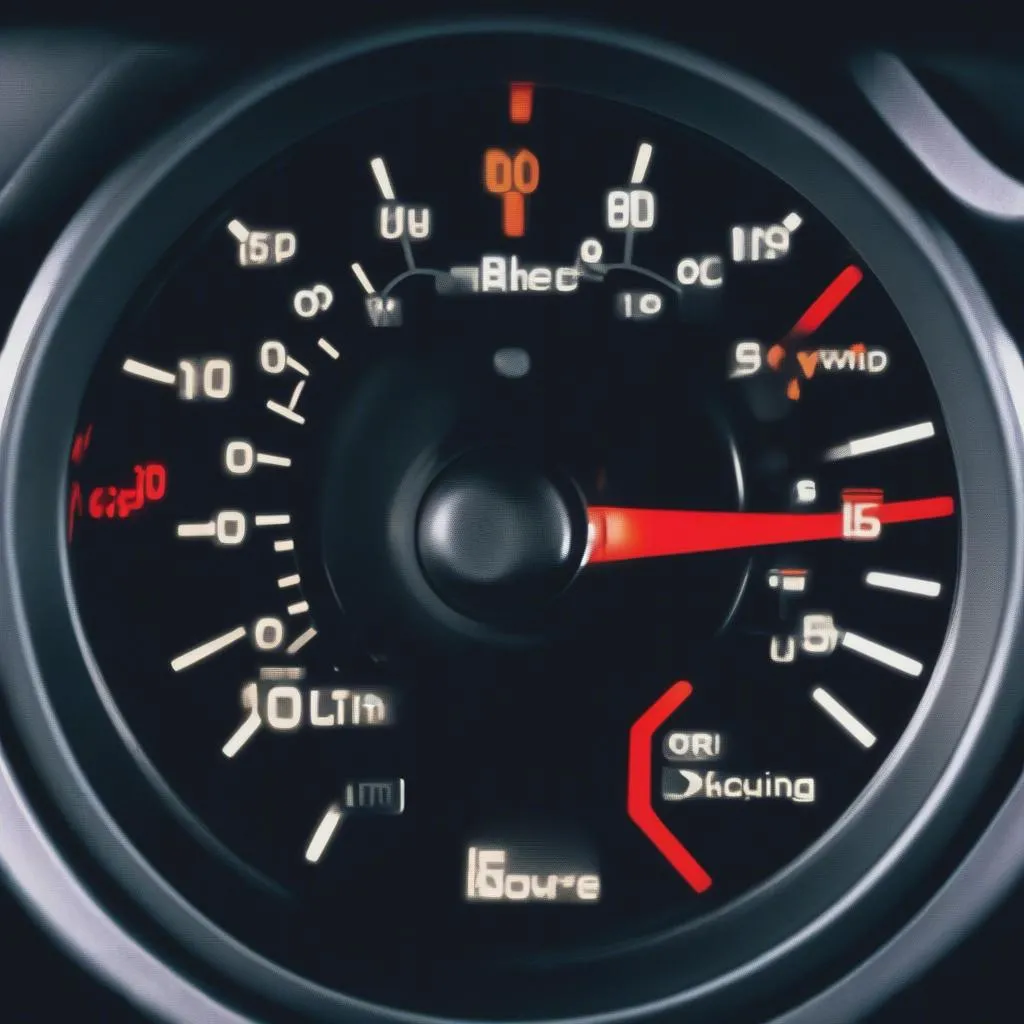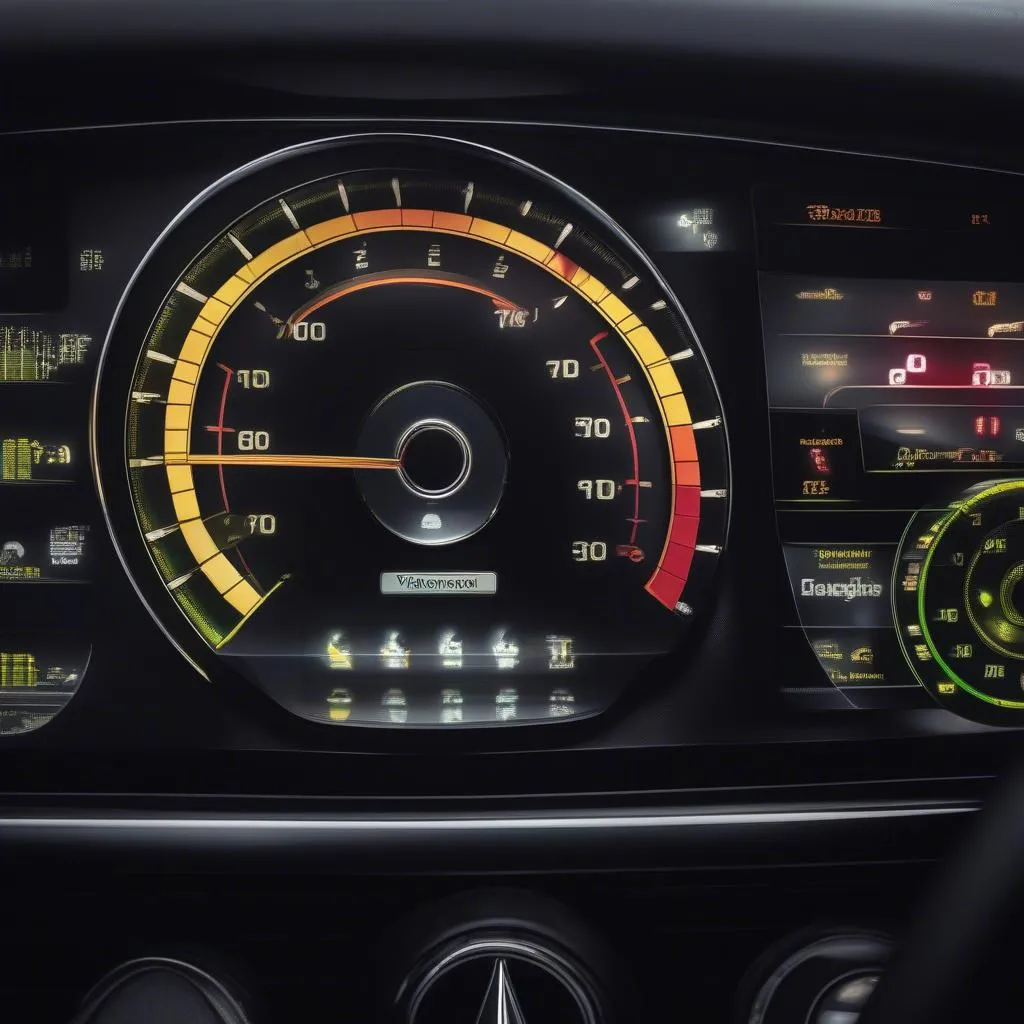Is your Mercedes-Benz struggling to start, especially in cold weather? Are you seeing the check engine light illuminated on your dashboard? These could be signs of a faulty secondary air injection pump, a common issue in various Mercedes-Benz models. Ignoring this issue can lead to further complications and costly repairs down the line. This article will delve into the intricacies of the secondary air pump in Mercedes-Benz vehicles and what you need to know if it malfunctions.
Understanding the Role of the Secondary Air Pump in Your Mercedes-Benz
The secondary air injection pump plays a crucial role in reducing emissions during the cold start phase. It injects fresh air into the exhaust system, aiding in the quicker conversion of harmful pollutants into less harmful substances. This process is particularly vital during the first few minutes after a cold start when the catalytic converter is not yet up to its optimal operating temperature.
 Mercedes-Benz engine bay
Mercedes-Benz engine bay
Common Symptoms of a Failing Secondary Air Pump
A failing secondary air pump can manifest itself in several ways. Being able to recognize these signs can save you from potentially more serious engine problems and expensive repairs later on. Here are some common indicators of a faulty secondary air pump:
- Illuminated Check Engine Light: One of the most obvious signs is the illumination of the check engine light on your dashboard. This light can be triggered by various issues, but a faulty secondary air pump is a common culprit.
- Rough Idle or Difficulty Starting: A malfunctioning secondary air pump can disrupt the air-fuel mixture during the engine’s warm-up phase, leading to a rough idle or difficulty starting, particularly in cold weather.
- Unusual Noises From the Engine Bay: You might notice a whining or whirring sound coming from the engine bay, particularly during startup. This noise is often indicative of a failing secondary air pump motor.
- Decreased Fuel Efficiency: As the engine works harder to compensate for the improper air-fuel ratio caused by a faulty air pump, you might experience a decrease in fuel efficiency.
 Car dashboard with check engine light illuminated
Car dashboard with check engine light illuminated
Diagnosing the Issue: Tools and Steps
Before jumping into repairs, it’s essential to diagnose the problem accurately. Here are the tools you’ll need and the steps to take:
Tools:
- OBD-II Scanner
Steps:
- Read the Error Codes: Connect an OBD-II scanner to your Mercedes-Benz’s diagnostic port (usually located under the dashboard) and read the error codes. A code related to the secondary air injection system, such as P0410, is a strong indicator of a problem with the pump.
- Inspect the Air Pump: Visually inspect the air pump for any signs of damage, such as cracks, loose connections, or wear and tear.
- Check the Air Pump Relay and Fuse: Locate the relay and fuse associated with the secondary air pump and check them for any faults.
Repairing or Replacing the Secondary Air Pump
If your diagnosis points to a faulty secondary air pump, the best course of action is to replace it. While it might be tempting to attempt a repair yourself, the intricate nature of the component and its importance to your vehicle’s emission system make professional replacement a safer and more reliable option.
You can find reliable replacement pumps and other automotive diagnostic tools at CARDIAGTECH.com.

